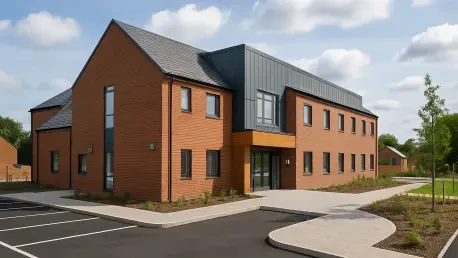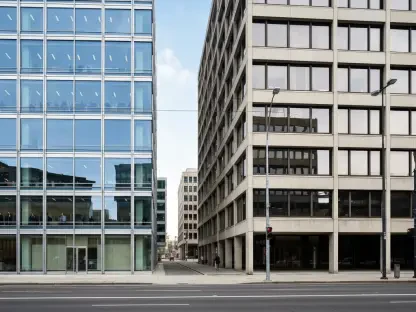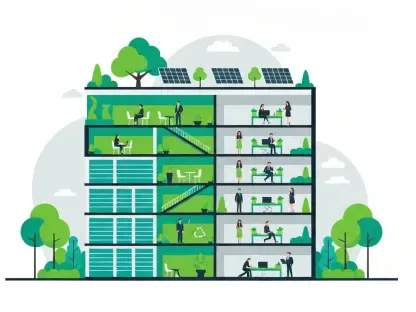In the heart of Essex, the village of Kelvedon is experiencing a transformative shift as a sprawling 300-home development takes shape on land north of London Road, promising not just new residences but also a relocated health center to serve the expanding community. This ambitious mixed-use project, incorporating a community hub with retail spaces, a care home, and childcare facilities, aims to address the pressing demands of a growing population. Yet, as the plans unfold, a critical question looms over the initiative: will the new Kelvedon and Feering Health Center truly have the capacity and design to support the area’s needs? With outline planning permission granted a couple of years ago after a contentious appeal, the development has sparked both hope for modernized healthcare and concern among locals about whether the infrastructure can keep pace with rapid growth. This situation encapsulates the delicate balance between progress and practicality, setting the stage for a deeper exploration of the challenges and promises ahead.
Addressing Population Growth with Modern Facilities
The driving force behind the relocation of the Kelvedon and Feering Health Center is the undeniable need for updated infrastructure to match the area’s burgeoning population, fueled by new housing projects like the one on London Road. Spanning a minimum internal floor area of 750 square meters on a 0.3-hectare plot, the new facility has been sized according to specifications from the Mid and South Essex Integrated Care Board (ICB), with the intent to cater to current healthcare demands. Beyond just space, the project includes a Section 106 Agreement that compels the developer to construct the building and ensure a designated number of parking spaces. This legal framework reflects a concerted effort by planning authorities to align the development with community needs, offering a modernized space that could potentially improve access to medical services for residents who have long awaited such upgrades in a village stretched by demographic changes.
While the scale of the health center appears promising on paper, there are additional layers of foresight embedded in the planning documents that suggest an awareness of future pressures. At the request of the ICB, the design incorporates provisions for potential extensions, a nod to the possibility of further growth in demand as more families move into the new housing development. This adaptability could prove vital in a region where housing land supply shortages have already necessitated approvals for large-scale projects, as seen with the planning inspector’s decision to greenlight this initiative despite initial objections. However, even with these considerations, skepticism lingers among stakeholders about whether these provisions will translate into practical solutions when the facility becomes operational. The balance between immediate functionality and long-term scalability remains a pivotal concern for a community eager for reliable healthcare access amidst rapid urbanization.
Community Concerns Over Design and Capacity
Despite the optimism surrounding modern facilities, significant apprehensions have emerged from local groups, particularly the Kelvedon & Feering Heritage Society, regarding the new health center’s design and operational readiness. Critics have pointed out that the building’s aesthetic—marked by plain brickwork, flat roofs, and oversized windows—lacks architectural distinction, potentially failing to blend with the village’s character. More pressing than appearances, though, is the issue of functionality. With only 32 designated parking spaces, and a possibility of five more, the facility may struggle to accommodate the estimated 60 individuals, including staff and patients, who could be present during peak hours. Given the location’s reliance on car travel, this shortfall could lead to significant congestion and accessibility challenges, undermining the center’s ability to serve as a convenient healthcare hub for the community it aims to support.
Adding to the unease is the perceived lack of foresight in the health center’s layout, which some argue does not adequately account for future expansion despite assurances in planning documents. The heritage society has highlighted that the current design might not easily adapt to increased demand as Kelvedon’s population continues to swell with new residents from the housing development. This concern is compounded by the broader context of infrastructure readiness in the face of urban growth, where new facilities must not only meet today’s needs but also anticipate tomorrow’s challenges. As discussions persist, the community remains divided on whether the health center represents a step forward or a missed opportunity to create a truly sustainable solution. These critiques underscore the tension between the urgency of development and the necessity for thoughtful, inclusive planning that prioritizes long-term viability over short-term gains.
Navigating the Future of Infrastructure Development
Reflecting on the journey of the Kelvedon and Feering Health Center relocation, it becomes evident that the project encapsulates a broader struggle within Essex to harmonize urban expansion with community well-being. The approval of the 300-home development, despite early resistance from Braintree Council, highlighted a critical shortfall in housing land supply that tipped the scales in favor of progress. Yet, the persistent worries over parking, design, and capacity at the health center reveal gaps in ensuring that such progress does not come at the expense of practicality. Local voices, amplified through groups like the heritage society, play a crucial role in bringing these issues to light, shaping a dialogue that demands better alignment between development goals and resident needs during planning meetings held in the past.
Looking ahead, the path forward requires a collaborative approach where planning authorities, developers, and the ICB can integrate community feedback into actionable improvements for the health center. Exploring options like additional parking solutions or modular design enhancements could address immediate concerns while preserving flexibility for future growth. Engaging with residents to refine the facility’s functionality might foster greater trust and ensure that infrastructure keeps pace with Kelvedon’s evolving landscape. This situation serves as a reminder that sustainable development hinges on anticipating challenges and proactively crafting solutions, offering a blueprint for other communities grappling with similar tensions between growth and readiness.









